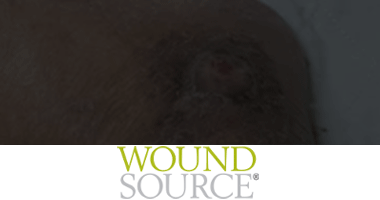Submitted by Janet Wolfson on January 7th, 2023


Submitted by Janet Wolfson on January 7th, 2023
he med-surg health care environment is constantly changing, driving complexity in care. The most recent findings from the Centers for Medicaid and Medicare Services state that pressure injuries develop in nearly 2.5 million patients annually, representing 8.3% of hospital admissions; the resulting financial burden for care is estimated to be between $3.3 and $11 billion annually.1 Although most occurrences of hospital-acquired conditions sharply decreased between 2010 and 2017, the Agency for Healthcare Research and Quality reported that pressure injuries increased by 6%.2
Pressure injuries develop when there is localized damage to the skin or underlying tissues due to pressure—and sometimes combined with shear—that impacts the skin’s ability to provide oxygen and nutrients and remove waste byproducts … read more
In this video, Natalia Cineas, DNP, RN, NEA-BC, discusses her SAWC session “Calling All Stakeholders: Involving the Entire Team in Pressure Injury Prevention” where she provides a brief explanation of what factors are considered and involved when formulating or making the switch to a multidisciplinary, team-based approach … Watch
Physical and occupational therapists are not always thought of when it comes to pressure injury prevention; however, their training and knowledge makes them key players in the interprofessional team. Pressure injuries are costly medical issues that can impact a patient’s ability to rehabilitate. Therapists need to understand the causes of pressure injuries to help reduce a patient’s risk. Nursing uses risk assessment instruments to identify patients who are risk for developing a pressure injury. Many of the elements that therapists address in an evaluation and daily treatment are those that are also being addressed in the risk assessment instruments. This article provides an overview to help therapists recognize ways to incorporate pressure injury prevention into their evaluation and daily practice and effectively communicate with other health care professionals … read more
Is It All About Protein?
by Nancy Munoz, DCN, MHA, RDN, FAND
The National Pressure Ulcer Advisory Panel (NPUAP) defines a pressure injury as localized damage to the skin and/or underlying soft tissue, usually over a bony prominence or related to a medical or other device. The injury can manifest as intact skin or an open ulcer and may be painful. The injury occurs as a result of intense and/or prolonged pressure, occasionally in combination with shear. The tolerance of soft tissue for pressure and shear may also be affected by microclimate, nutrition, perfusion, comorbidities, and the condition of the soft tissue.1
Pathophysiologic and intrinsic factors at the core of pressure injury development include nutrition. Maintaining adequate nutrition is considered a best practice for both the prevention and treatment of pressure injuries … read more